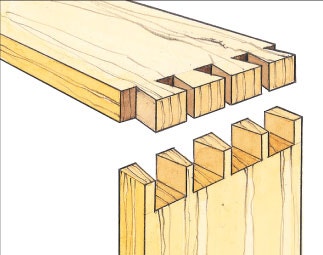Four Types of Dovetail Joints
As with so many woodworking joints, the basic dovetail joint has seen several variations. They all join two pieces of wood together, but they have different characteristics that enhance specific designs.
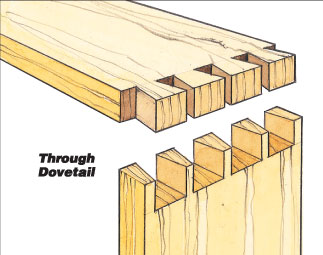
Through Dovetail More than any other joint, the through dovetail joint leaves nothing unsaid. The interfaces between the long grains and end grains demonstrate the hand skill of the maker, and the layout demonstrates the design skill. It's usually the first dovetail joint you learn to make, but it should be viewed as just one of the family — no more or less a star than the other three.
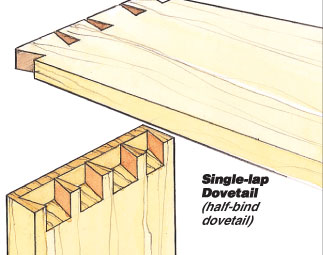
Single-lap Dovetail The single-lap (known to many folks as a half-blind dovetail) is the best known of the dovetails since it's used to join the front to the sides of a drawer. Whether the drawer is housed in a veneered or solid wood case, opening it reveals the pedigree of the piece. At its best, if it's a handmade drawer, the feel and sound of its opening is the prelude to enjoying the refinement of the thin drawer sides, the choice of wood, and the elegance of the single-lap dovetail joints. It's an experience no longer available from the furniture industry, being too expensive for all but the few of discerning taste and limitless budget, but it is fully within the bailiwick of amateur woodworkers with the will to make it. Whether cut and chopped by hand, or made using a good quality dovetail jig, amateurs can produce heirloom quality furniture and include this elegant joint as evidence.
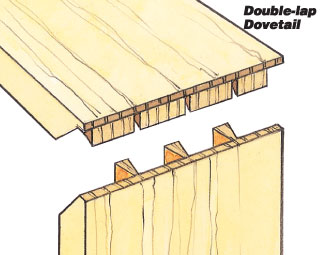
Double-lap Dovetail Only a thin strip of end grain announces that the double-lap dovetail is hidden inside. It's a bit easier and quicker to make than the secret miter dovetail (shown below). Again, this handmade marvel has left the vocabulary of industrial builders. It was mostly used on larger cases, such as sideboards or chests, rather than smaller cases, such as jewelry boxes and knee desks. When the end grain is molded with a scratch stock along with the long grain edges, the resulting shadow lines subtly define the architecture of the piece.
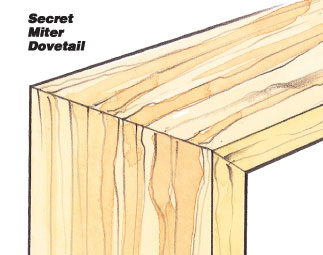
Secret Miter Dovetail Why use a secret miter dovetail? To preserve the quality of the joinery, without the visual impact of the pins and tails. Some woods to which hand-makers are privy are simply so beautiful or so striking that a visible row of through dovetails, no matter how elegantly made, would detract from the piece rather than enhance it. Similarly, some cases can be made so refined in their proportions that their quiet sophistication would be interrupted or even destroyed by a through joint. Additionally, in some cases the wood may be so dark that the pattern value of pins and tails is scarcely visible.
Keep the inspiration coming!
Subscribe to our newsletter for more woodworking tips and tricks
